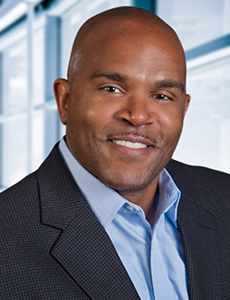Sponsored: Pinnacle Actuarial Resources
Navigating These 4 Medical Professional Liability Trends Is Critical For Insurers To Remain Relevant

Medical professional liability (MPL) insurers had for years been the darlings of the property/casualty industry. It was a highly profitable line of business that enjoyed ample surplus.
Then electronic medical records and the Affordable Care Act set in motion a new market paradigm.
Since the Act’s passing in 2010, consolidation in the healthcare industry has been rampant. Hospitals began employing individual physicians and physician groups that once stood as independent entities — and were the primary customers for MPL insurers.
“Now that hospitals have employed these physicians, the MPL writers don’t have a natural segue or traction into the hospital space, so they have seen their premium base dramatically reduced,” said Art Randolph, Principal and Consulting Actuary with Pinnacle Actuarial Resources, Inc.
As a result, MPL writers were forced to expand their business models to focus on providing new services to healthcare systems in addition to their traditional insurance product.
But that was just the tip of the iceberg. Between regulatory reform, technological advancement, litigation trends and cost inflation, the pace of change in the healthcare sector has been relentless, and the MPL market will have to continue to adapt if it wants to remain relevant.
Currently, these four trends are most pressing for MPL insurers to contend with in order to maintain their relevance in this ever-changing market:
1. Shifting Risk Pools and a Persistent Soft Market Are Putting Pressure on Loss Ratios

Art Randolph, Principal and Consulting Actuary with Pinnacle Actuarial Resources, Inc.
When physicians are absorbed by a hospital and leaves an MPL writer’s book of business, it potentially alters the risk profile and therefore the expected losses per policyholder, which could result in rates that are mismatched to the level of risk assumed.
“Consider a scenario in which an MPL writer’s population of pediatricians was acquired by a healthcare system. Now they run the risk of potentially having inadequate rates because their remaining insureds are physicians and surgeons with a higher propensity of loss (both frequency and severity),” Randolph said. “These insurers seeing a shift in their risk profile landscape know that to stay competitive and to avoid adverse selection, they have to recalibrate their class relativities.”
But the need for rate is outweighed by what the market dictates any insurer can ask for. Amid ongoing soft market conditions, raising rates could drive remaining policyholders away. Ultimately, assuming more risk without adequate rate erodes MPL writers’ loss ratios.
Larger insurers may choose to utilize surplus to subsidize inadequate rates while they wait for conditions to turn in their favor. But with no sign of a hardening market ahead, MPL writers can benefit from a reevaluation of their risk profiles.
2. Claims Are Becoming More Severe, And Frequent
“Large claims are getting larger at an accelerated pace. Relative to recent history, we’re seeing more claims with awards in the multiple-millions,” Randolph said. Medical cost inflation is one factor driving rising settlements, but sympathetic juries and opportunistic plaintiffs’ attorneys amplify the trend.
Some states set caps on claims for non-economic damages, such as compensation for pain and suffering. Recently, though, more states have been challenging the constitutionality of these caps and/or increasing them or removing them entirely. For example, where claimants could previously seek no more than $250,000 in non-economic damages, the sky could now be the limit.
“The elimination of tort caps has attracted more plaintiffs’ attorneys to medical malpractice cases. Well-capitalized litigators can devote a lot of resources to these cases and drive up the cost,” Randolph said. Juries also tend to side with injured individuals over large, faceless healthcare providers. In some cases, juries have awarded amounts even greater than what claimants have demanded.
Skyrocketing claims costs could jeopardize MPL writers’ surplus (subject to reinsurance protection) and force them to take a more deliberate review of their rating algorithms and loss reserves.
3. An Increased Need for Diversification
As these trends threaten MPL profitability, carriers are forced to diversify their revenue streams, shifting away from risk-based revenue — i.e., premium — to non-risk-based streams like consulting services.
“MPL insurers already have the in-house loss control and claims expertise. They’ve just never collected revenue for them because these services are typically incorporated into a policy as a value-add,” Randolph said. “But now there is an opportunity for MPL writers to separate the two and market themselves as expert consultants, at a cost.”
These services include education in best practices, peer reviews, safety training, and claims management, among others. Other diversification avenues include insuring excess layers of coverage or partnering with a risk retention group (RRG) to expand into new geographies.
“We’ve seen several MPL carriers partnering with the London and Bermuda markets to participate in reinsurance layers,” Randolph said. “We’ve also seen MPL writers either partner with or buy RRGs because they offer access to other states. Acquiring an RRG is a way to access other markets without having to go through the licensing and rate filing processes.”
4. Telemedicine’s Challenges
In addition to sector consolidation, telemedicine has shook up the healthcare delivery model, especially in rural areas, given favorable consumer attitudes related to telehealth services.
“People living in rural areas might have to drive 35 miles to the nearest hospital,” Randolph said. “With telemedicine, doctors can reach any patient with an internet connection.”
But virtual treatment raises legal questions that heighten a physician’s liability exposure. For one thing, evaluating a patient through a screen limits how thoroughly a physician can conduct an examination and could increase the likelihood of a misdiagnosis due to lack of continuity of care. If a patient decides to sue a doctor for bad advice, questions of state jurisdiction comes into play. Other liability risks include privacy, patient confidentiality, etc.
“If a physician based in Georgia treats a patient via telemedicine in rural Oklahoma, and that patient sues, will Oklahoma or Georgia state laws apply? This is where coordination among the various state regulations would clarify the risk being assumed by the insurers,” Randolph said.
“This is an unresolved issue that MPL insurers are aware of, but so far do not have a solution for,” Randolph said.
How MPL Writers Can Optimize their Business to Thrive in Changing Market
As these trends continue to challenge the business model for MPL insurers, they will face tough choices around how to optimize their risk portfolio and choose profitable diversification strategies.
Turning to partners with both actuarial and industry-specific expertise can help guide decision-making.
“If MPL insurers are considering participating in reinsurance or acquiring an RRG, we can help them evaluate the impact to their book of business, their rates and profit margins, and their credit risk. We can help them determine whether or not these strategies will be profitable endeavors,” Randolph said.
Should they choose not to diversify, Pinnacle’s consultants can help insurers re-evaluate their rating and reserving algorithms to adjust to changes in the risk profile of their exposure base. They can also provide predictive analytics services that help identify optimal premium-to-risk combinations on the front end.
“Even if you’re the insurer that takes a ‘wait and see’ approach, that doesn’t mean that you have to keep writing the same risks,” Randolph said. “Now might be the time to see if a predictive analytics algorithm would determine who the best risks are given the market’s current state. We have the expertise to help insurers accomplish that.”
To learn more, visit https://www.pinnacleactuaries.com/.
This article was produced by the R&I Brand Studio, a unit of the advertising department of Risk & Insurance, in collaboration with Pinnacle Actuarial Resources, Inc. The editorial staff of Risk & Insurance had no role in its preparation.










